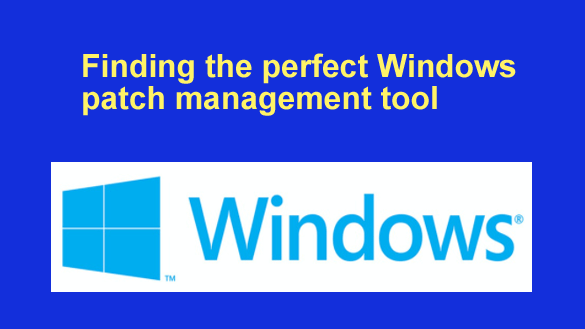 Windows patch management might not be the most glamorous task in IT, but ensuring your systems are up-to-date is crucial. But with so many tools out there, how do you choose the perfect one?
Windows patch management might not be the most glamorous task in IT, but ensuring your systems are up-to-date is crucial. But with so many tools out there, how do you choose the perfect one?
Whether you’re an IT professional, a system admin, or just someone trying to keep your Windows machine running smoothly, this guide is for you. We’ll explore what makes a patch management tool effective and how you can find the best fit for your needs.
The Basics of Patch Management
Let’s start with the basics. What exactly is patch management? Simply put, it’s the process of managing updates for software applications and systems. These updates, or patches, fix vulnerabilities, improve functionalities, and keep your system secure. In our rapidly evolving digital world, keeping your software up-to-date isn’t just a good idea; it’s essential.
Every time a software company discovers a vulnerability, they release a patch. Ignoring these can leave your system open to attacks. But manually managing each update for every device? That’s a recipe for madness. Enter patch management tools.
Why You Need a Patch Management Tool
You might be thinking, “Can’t I just rely on Windows Update?” While Windows Update is great for personal use, businesses need more robust solutions. Here’s why:
- Centralized Control: Patch management tools offer centralized dashboards, making it easier to monitor updates across numerous devices.
- Automation: Automate tasks like scanning for updates and applying them, saving time and reducing human error.
- Compliance Reporting: Generate reports to ensure all systems are compliant with regulatory standards.
These tools are life-savers for IT professionals and system administrators. Imagine managing patches for hundreds, if not thousands, of machines without one. That’s a headache we wouldn’t wish on anyone.
Features to Look for in a Patch Management Tool
Not all patch management tools are created equal. Here are some features to consider when choosing the right one for your needs:
- Automation Capabilities: Automation is key. Look for a tool that can schedule updates, automate testing, and apply patches without manual intervention.
- Compatibility: Ensure the tool supports all versions and editions of Windows you manage. Some tools, like BatchPatch, even support third-party applications.
- Reporting and Analytics: A good tool offers detailed reporting features. These help you track which patches were applied, which failed, and why.
- Scalability: If your organization is growing, you’ll want a tool that can scale with you. Consider future needs, not just current ones.
- User-Friendly Interface: Nobody wants to spend hours figuring out how to use a tool. A clear, intuitive interface is invaluable.
BatchPatch
BatchPatch is a favorite in the patch management world, and for good reason. It provides a seamless experience for managing Windows updates across a multitude of systems. Here are some of its standout features:
- Real-Time Monitoring: Keep an eye on patch deployment as it happens, allowing for swift troubleshooting if something goes wrong.
- Integrated Job Queue: Schedule multiple tasks ahead of time, all in one convenient queue.
- Remote Execution: Run scripts and processes remotely without needing to physically access each machine.
Making the Right Choice for Your Organization
Choosing the right tool often requires a bit of trial and error. Here are some steps to guide you:
- Assess Your Needs: Determine the size of your network, the complexity of your systems, and any specific regulatory requirements you must meet.
- Research and Test: Narrow down your options and test them. Most providers offer free trials, allowing you to get a feel for the tool without commitment.
- Evaluate Costs: While price shouldn’t be the only factor, it’s important. Compare the costs against the features offered to ensure you’re getting good value.
- Seek Recommendations: Sometimes the best advice comes from peers. Reach out to other IT professionals for their experiences and recommendations.
Conclusion and Next Steps
Patch management might not be the most glamorous part of IT, but it is one of the most important. With the right tool, you can streamline the process, enhance security, and free up time for more strategic initiatives. Tools like BatchPatch make patch management a breeze, offering automation, real-time monitoring, and flexibility.
Remember, the right patch management tool can make all the difference. By considering factors like automation, compatibility, and user interface, you can find a solution tailored to your needs. Start by assessing your organizational requirements, and don’t hesitate to explore free trials to get hands-on experience.
For more insights into optimizing your IT infrastructure, stay tuned to our blog. Happy patching!